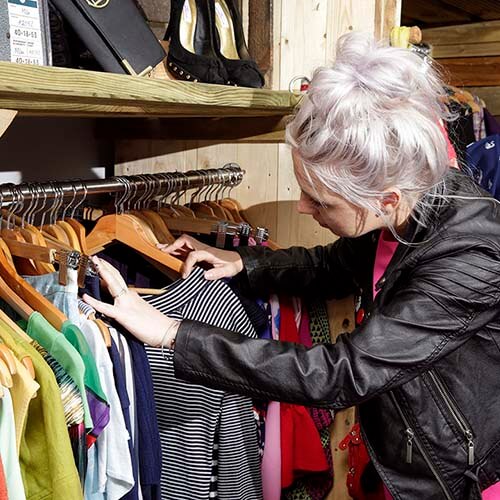
Ways to shop sustainably
See it. Buy it. Use it. Discard it. Our consumption habits summed up in one simple sentence, on repeat.
You might think that most of the carbon emissions from these products depends on whatever you put in your bin or manage to recycle at the end. Wrong.
Step up your footprint knowledge
What we buy, use and discard in our everyday life is fueling climate change at an alarming rate – in two ways:
Our material footprint
The sheer weight of stuff we go through (every person in Scotland uses on average 18.4 tonnes of materials per year which is more than double what it should be to live sustainably). This measure of stuff is otherwise known as our material footprint.
It includes the raw materials extracted to make the things we buy. Most of this extracted material will never make it to Scotland or in the product we buy.
Our carbon footprint
Every stage of a product's life cycle emits carbon, from the energy needed to extract raw materials to the transport of products to retailers and then consumers. All these emissions contribute to climate change.
Whether it’s the new shiny shoes on our feet, the smartphone in our pocket or the coffee mug on our desk – all goods come with a carbon cost, often referred to as carbon footprint.
This means that the more stuff we buy, the higher our material and carbon footprint and the more we contribute to climate change. There is a carbon cost to everything we consume, only we can’t see it.
Everything we buy comes with a carbon cost - often referred to as carbon footprint. #ConsumingResponsibly
Share on

Top 5 tips to shop more sustainably
Stop. Think. Do you really need that piece of tat you’ve grabbed in a hurry?
Make second-hand your first choice or borrow where you can.
If something breaks, try repairing it or upcycling it into something new.
More than ever, local businesses need people to shop locally.
Pass on unwanted items so that they can still be used by someone else.
